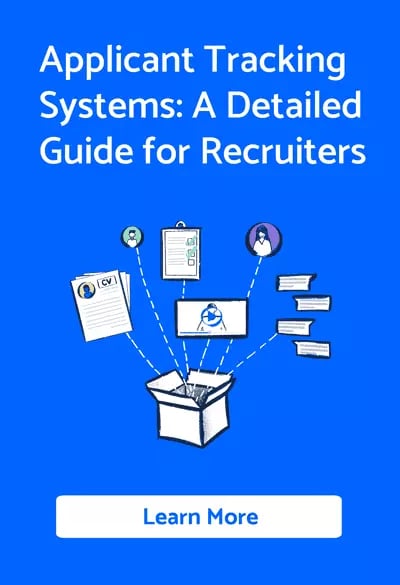Employer branding has become crucial to talent acquisition and retention in today's competitive job market.
According to LinkedIn, 72% of recruiting leaders worldwide agree that employer branding significantly impacts hiring.
However, even with the increasing importance of employer branding, many organisations need help implementing and maintaining a strong employer brand.
This comprehensive guide will explore the 14 top employer branding challenges that business leaders must address, backed by data and metrics, to ensure a successful employer branding strategy.
1. Defining a clear employer value proposition (EVP)
One of the most significant employer branding challenges is defining a clear and compelling EVP.
An EVP is a unique combination of benefits, rewards, and opportunities that an organisation offers its employees.
Creating a strong EVP requires deep understanding of your company's culture, values, and goals.
To overcome this challenge, involve employees from different levels and departments in defining your EVP. Conduct surveys and focus groups to gather insights on what employees value most about your organisation.
Use these insights to create a distinct EVP that resonates with your target audience.
2. Aligning employer brand with corporate brand
Another common challenge is aligning the employer brand with the overall corporate brand.
A disconnect between these two aspects can create clarity among potential candidates and employees, positively impacting your ability to attract and retain top talent.
To address this challenge, ensure your employer brand messaging is consistent with your corporate brand.
This includes aligning your EVP, values, and culture with your company mission, vision, and goals. Collaborate with marketing, HR, and leadership teams to develop a unified branding strategy that effectively communicates your organisation's identity to internal and external audiences.
3. Consistent communication and messaging
Maintaining consistent communication and messaging is crucial in building a strong employer brand. Inconsistent messaging can damage your reputation and confuse potential candidates and employees.
Ensure that all communications, including job advertisements, social media posts, and internal communications, align with your employer’s brand messaging.
Develop guidelines and best practices for communicating your employer brand across various channels and provide training for employees involved in the process.
4. Leveraging social media effectively
Social media has become a powerful tool for employer branding, but many companies need help with leveraging it effectively.
This can result in a weak or inconsistent online presence that fails to attract top talent.
Develop a comprehensive social media strategy that outlines your objectives, target audience, and content plan.
Ensure your messaging is consistent across all platforms and reflects your employer brand's key elements. Regularly measure the performance of your social media efforts to identify areas for improvement and optimise your strategy.
5. Employee advocacy and engagement
Employee advocacy is a critical component of a successful employer branding strategy. However, many organisations need help to engage employees in promoting their employer brand.
To overcome this challenge, create a supportive environment encouraging employees to share their experiences and achievements on social media and professional networks.
Provide guidelines and training on effectively representing your company online and recognise and reward employees actively participating in employer branding initiatives.
6. Attracting top talent in a competitive market
With the increasing competition for top talent, attracting highly skilled candidates is a significant challenge for many organisations.
To stand out in a competitive market, focus on showcasing the unique aspects of your employer brand, such as your company culture, career development opportunities, and employee success stories.
Invest in targeted job advertisements and social media campaigns to reach your desired audience and highlight the benefits of working for your organisation.
7. Maintaining a positive online reputation
In the digital age, maintaining a positive online reputation is essential for attracting top talent. Negative reviews and comments on platforms like Glassdoor can deter potential candidates from applying for positions at your organisation.
To address this challenge, actively monitor and respond to reviews and comments on various platforms. Address concerns and criticisms in a professional and transparent manner, demonstrating your commitment to continuous improvement.
Encourage satisfied employees to share their positive experiences online to balance any negative feedback.
8. Adapting to remote work and hybrid models
The rise of remote work and hybrid models presents a new challenge for employer branding.
Organisations must adapt their branding strategies to engage with remote candidates and employees effectively.
Promote your organisation's remote work culture by sharing stories and testimonials from remote employees.
Offer virtual workplace tours to give candidates a sense of your company culture.
Ensure that your onboarding and training processes are tailored to support remote employees and help them integrate into your organisation seamlessly.
9. Measuring employer branding ROI
Measuring employer branding initiatives’ return on investment (ROI) is a common challenge for many organisations.
With clear metrics, it can be easier to assess the effectiveness of your employer' branding strategy and make data-driven decisions.
Develop a comprehensive set of KPIs to measure the impact of your employer branding initiatives on your recruitment and retention goals. Utilise analytics tools to gather and analyse data and share the insights with key stakeholders to drive continuous improvement.
10. Balancing budget constraints
Budget constraints can significantly challenge implementing an effective employer branding strategy. Limited resources may result in a lack of investment in employer branding initiatives, impacting the ability to attract top talent.
To overcome budget limitations, prioritise employer branding initiatives with the highest potential ROI. Focus on cost-effective strategies, such as leveraging employee advocacy and social media, to maximise the impact of your employer branding efforts.
11. Keeping up with industry trends and best practices
Staying up-to-date with industry trends and best practices is essential for maintaining a strong employer brand. Adapting to changes in the market can result in an outdated and ineffective employer branding strategy.
Regularly research and attend industry events, conferences, and webinars to stay informed about the latest trends and best practices in employer branding. Implement new strategies and technologies as needed to ensure your employer branding efforts remain relevant and practical.
12. Addressing diversity and inclusion
Fostering diversity and inclusion is a critical aspect of a successful employer brand. However, many organisations need help in implementing effective diversity and inclusion initiatives.
To address this challenge, develop a comprehensive diversity and inclusion strategy encompassing recruitment, onboarding, employee development, and retention. Train HR and leadership teams on diversity and inclusion best practices, and regularly review your progress to ensure continuous improvement.
13. Managing negative employee experiences
Negative employee experiences can damage your employer’s brand and deter potential candidates. Addressing these experiences and ensuring a positive work environment is crucial for maintaining a strong employer brand.
Regularly survey employees to gather feedback on their experiences and identify areas for improvement. Address concerns promptly and transparently and implement changes to improve the employee experience.
14. Coordinating Cross-Functional Collaboration
Effective employer branding requires collaboration between various departments, such as HR, marketing, and leadership. However, coordinating cross-functional collaboration can be a challenge for many organisations.
Establish clear communication channels and processes to facilitate collaboration between departments. Regularly hold cross-functional meetings to discuss employer branding initiatives and ensure alignment and consistency across your organisation.
To wrap up…
Employer branding challenges are numerous and varied, but business leaders can overcome these obstacles and build a strong employer brand with a strategic approach and commitment to continuous improvement.
Organisations can attract and retain top talent by addressing these 14 top employer branding challenges, driving long-term success and growth.
Prioritising clear communication, employee advocacy, and adapting to industry trends and remote work are just a few of the critical steps required to create a compelling employer brand that appeals to today's competitive job market.
By understanding and addressing these challenges, business leaders can differentiate their organisations, position themselves as employers of choice, and ultimately build a strong foundation for future growth and success.






